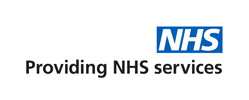General Practice Fact Sheet (updated October 2021)
What’s happening?
– Including COVID-19 vaccination appointments, the total number of appointments delivered in general practice has increased by over 18% in the last 12 months – on top
of an already high workload before the pandemic – and we now have the highest level of demand ever
– Despite ongoing COVID infection prevention control working arrangements, 58% of consultations are taking place face to face (August 2021)
– 46% of appointments in August 2021 took place on the same day that they were booked, compared to 42% in August 2019
– Since March 2020, GP practices have delivered an estimated 467 million appointments, including COVID vaccinations, with over 229 million being face-to-face
– There were over two million more practice appointments in August 2021 compared to August 2019; we also have the equivalent of 1,056 fewer fully qualified full-time GPs now compared to then
– Nevertheless, 79% of patients are generally satisfied with their general practice appointments.
Why?
There aren’t enough GPs:
– Since 2015, the average number of patients per practice has increased by 24%
– Since 2015, the number of fully qualified FTE GPs has reduced by 1,803 (6%)
– We lost the equivalent of 380 fully qualified full-time GPs between September 2020 and August 2021
– Since March 2021, we have lost the equivalent of 496 fully qualified full-time GPs
– Since March 2021, we have lost the equivalent of 663 full-time nurses
– Since March 2021, we have lost the equivalent of 945 other full-time direct patient care staff, eg clinical pharmacists, healthcare assistants, primary care paramedics etc
– That’s 2,104 fewer staff in general practice who can carry out patient appointments
– The public agrees – 92% say the Government should do more to deliver its election pledge to recruit 6,000 more GPs and provide 50 million more face to face GP appointments per year
– 43% of the public agree the Government is to blame for GPs being unable to offer face-to face appoints because they have not recruited enough GPs to match patient need in the last decade.
1 Appointment, workforce and funding data included in this fact sheet are based on analysis of NHS Digital and
DHSC reports – we know this data has quality issues, but these are official statistics.
2 These are just the appointments delivered in GP practices and don’t include Out of Hours providers, Urgent
Treatment Centres and appointments provided by GPs in other settings, which will increase the figures further.
3 ‘Polling for the Daily Mail on the public’s attitudes to GP appointments’ https://www.jlpartners.co.uk/polling-results
4 GPs are not just leaving; the hours GPs have been working are unsustainable. Many are reducing their hours
down to manageable levels, which are often still full-time hours or more, to preserve their physical and mental
wellbeing, as per the Physician’s pledge – ‘I WILL ATTEND TO my own health, well-being and abilities in order
to provide care of the highest standard’, and, over the last decade, the Government has not sanctioned the
training of anywhere near enough new GPs to make up the shortfall.
5 ‘Polling for the Daily Mail on the public’s attitudes to GP appointments’ https://www.jlpartners.co.uk/polling-results
The Government and Public Health England have also instructed practices to maintain social distancing and to continue to see patients virtually wherever clinically possible.
– So practices, limited by long-term systemic under-investment in surgery space, cannot
have as many patients in their practice to ensure patients do not catch COVID-19.
Despite mistruths from politicians, the government hasn’t invested
enough in general practice to meet patient demand, employ more GPs and
build bigger, better surgeries.
– Since 2016, funding given to practices has gone up by less than 1%
– Since 2016, the average payment to a practice per patient has reduced by almost 4%
– The latest figures show we are still £3.9bn below the absolute minimum we need, and that
was based on information from two years ago.
What does this mean?
Patients are rightly frustrated that they can’t access an appointment in a
way that suits their wants, and some have become abusive and many more
are vocalising their frustration with the way the system operates through
abuse and aggression
– 83% of GPs say they have witnessed verbal abuse of staff in the workplace
– 65% of GPs say they have experienced verbal abuse
– 8% of GPs have witnessed physical abuse
– 2% of GPs have been subject to physical abuse – if scaled up, this would mean nearly 850 attacks on GPs.
What’s the solution?
We desperately want our patients to be able to access the care they need. To allow this to happen in a safe way we’re calling on the Government to:
1. Urgently and properly invest in general practice staff and premises and remove unnecessary targets and bureaucracy.
2. Work with NHS England and NHS Improvement to coordinate a national pandemic response for primary care so that practices have the resources they need to get
through the backlog of care more quickly – to include redeployment of staff from other parts of the healthcare service so that general practice can better resolve
issues or triage patients to the right service.
3. Provide consistent public statements of support for GPs in the face of media scapegoating for implementing Government and NHS policies to keep patients safe.
4. Attend a BMA summit to discuss the huge pressures in general practice and unacceptable level of abuse being levelled against GPs and their staff, and deliver on the commitment to work with the BMA and other healthcare organisations on a national campaign to stop abuse of the NHS workforce.
5. Deliver on the promise of increased sentencing for those who assault emergency workers to two years, in line with the Police, Crime, Sentencing and Courts Bill (and
the Government’s manifesto), as well as introduce heavier punishments for verbal abuse against NHS staff.

